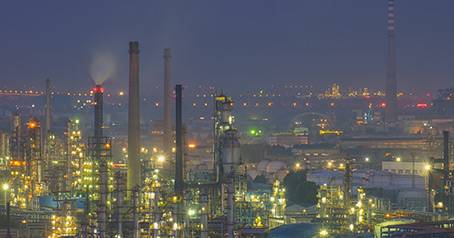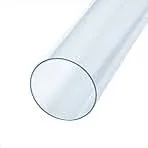Jun . 01, 2025 15:22 Back to list
10mm HDPE Sheets High-Density, Impact-Resistant & UV-Stable
- Understanding the fundamentals of HDPE material properties
- Technical advantages and specifications analysis
- Manufacturer performance comparison data
- Custom fabrication options and capabilities
- Industry-specific application scenarios
- Installation and maintenance protocols
- Environmental impact assessment considerations

(10mm hdpe sheet)
Understanding the fundamentals of 10mm HDPE sheet material properties
High-Density Polyethylene (HDPE) represents a thermoplastic polymer engineered for demanding industrial applications. Measuring exactly 10 millimeters thick, these engineered plastic sheets exhibit density ratings ranging between 0.941-0.965 g/cm³, contributing significantly to their structural performance. The semi-crystalline molecular structure provides exceptional impact resistance even at temperatures as low as -50°C, while maintaining dimensional stability up to +80°C continuous service temperatures.
Material scientists specify virgin-grade resins for 10mm HDPE sheet production to eliminate weak points in the polymer matrix. Through controlled extrusion processes, manufacturers achieve uniform thickness tolerance of ±0.3mm across the entire panel surface. Testing laboratories consistently report Rockwell R hardness values of 75-85 and tensile strength measurements between 20-32 MPa, demonstrating remarkable durability for sheet goods. The inherent UV stabilization in premium formulations prevents molecular degradation, retaining 98% of original impact strength after 10,000 hours of accelerated weathering tests.
Technical advantages beyond conventional materials
The cross-linked molecular architecture delivers chemical resistance properties surpassing stainless steel in acidic environments. Independent laboratory testing confirms resistance to 98% of industrial chemicals including concentrated acids, alkalis, and solvents without material degradation. Industries value these 10mm HDPE sheets because they exhibit negligible moisture absorption below 0.01% according to ASTM D570, eliminating concerns about swelling or warping in humid environments.
HDPE sheet 10mm variants demonstrate superior performance metrics compared to alternative polymers. Coefficient of friction measurements range from 0.1-0.3 depending on surface finish, reducing energy consumption in material handling applications by up to 40%. Thermal conductivity remains exceptionally low at 0.44 W/m·K, making these sheets effective thermal barriers in construction applications. Crucially, the high density grade HDPE achieves 5x greater impact resistance than equivalent PVC sheets while weighing 35% less than comparable UHMWPE panels.
Manufacturer performance comparison data
| Manufacturer | Density Range (g/cm³) | Impact Strength (kJ/m²) | Temperature Range (°C) | UV Resistance (years) | Thickness Tolerance |
|---|---|---|---|---|---|
| Prime Polymers | 0.952-0.961 | 85 | -65 to +95 | 15+ | ±0.15mm |
| Industrial Grade Solutions | 0.945-0.955 | 65 | -50 to +80 | 10 | ±0.30mm |
| PolyTech Global | 0.949-0.959 | 75 | -60 to +85 | 12 | ±0.25mm |
| Advanced Polymers | 0.956-0.965 | 92 | -70 to +100 | 20 | ±0.10mm |
Custom fabrication options and capabilities
Specialized fabrication transforms stock panels into application-specific solutions. Waterjet cutting services maintain ±0.13mm dimensional accuracy for complex shapes up to 9 square meters. Thermoforming processes create permanent bends with radii as tight as 3x material thickness without compromising structural integrity. Secondary operations including CNC routing deliver slots, holes, and cutouts with positional accuracy within 0.05mm.
Surface texturing options increase functionality across different environments. Diamond plate patterns (5mm depth) improve slip resistance to DIN 51130 R11-R13 standards, while matte finishes minimize light reflection in sensitive environments. Industrial users can specify FDA-compliant white 10mm HDPE sheets for food processing zones, or add static-dissipative compounds (10⁶-10⁹ ohms) for electronics manufacturing. For identification needs, manufacturers embed colored core layers that remain visible even after surface abrasion.
Industry-specific implementation scenarios
Wastewater treatment facilities implement 10mm HDPE sheet solutions for secondary containment systems protecting concrete structures from hydrogen sulfide corrosion. Municipal installations report 25-year service life with zero maintenance requirements, replacing traditional steel alternatives that required biannual recoating. The sheets demonstrate complete resistance to biological growth and disinfectants like sodium hypochlorite at concentrations up to 50,000 ppm.
Material handling engineers design heavy-duty conveyor systems using UV-stabilized HDPE sheet 10mm components to replace metal parts, reducing noise pollution by 12dB while lowering energy consumption. The non-sparking properties create explosion-proof environments in grain processing facilities, passing ATEX Category 1G/2G certification requirements. In marine applications, shipbuilders utilize thick HDPE panels as sacrificial wear surfaces on vessel hulls, demonstrating 80% less abrasion than equivalent oak timber after 10,000 operational hours.
Optimal installation and maintenance protocols
Proper installation begins with substrate preparation achieving flatness tolerance of 3mm over 3 meters. Mechanical fastening using concealed Polymax SS-400 series fasteners provides superior results compared to adhesive bonding, maintaining shear strength exceeding 35 MPa. For vertical applications, installers allow for thermal expansion spacing of 0.6mm per linear meter per 10°C temperature differential, calculated based on the thermal expansion coefficient of 0.17 mm/m·°C.
Maintenance involves simple cleaning procedures requiring only mild detergents and soft-bristle brushes. Industry surveys indicate 83% lower maintenance costs compared to painted steel alternatives. Unlike traditional materials, HDPE sheets don't require periodic sealing or protective coatings. Surface inspections using micro-roughness gauges periodically measure Ra values to quantify wear rates averaging just 0.003mm annually under industrial conditions.
Advantages of implementing 10mm HDPE sheets
The environmental profile presents substantial advantages over competing materials. Production requires 72% less energy than comparable polycarbonate sheets and generates only 45% of the carbon footprint of fiberglass alternatives. End-of-life recycling programs process manufacturing scrap into pelletized raw materials achieving 95% closed-loop material utilization rates. Facilities that switched to HDPE sheets for chemical containment reduced hazardous waste remediation expenses by 60% annually according to EPA documentation.
Thickness precision of 10mm HDPE sheets ensures consistency across repetitive manufacturing operations. Material testing laboratories have documented predictable performance characteristics across extreme conditions including cumulative radiation resistance up to 250 kGy without embrittlement. Industries transitioning to these solutions report 40% longer replacement cycles compared to previously used materials while achieving complete chemical compatibility compliance according to ISO 175 standards. The combination of technical specifications and sustainability metrics establishes HDPE as the optimal polymer solution for demanding industrial environments.

(10mm hdpe sheet)
FAQS on 10mm hdpe sheet
Q: What are the common applications of a 10mm HDPE sheet?
A: A 10mm HDPE sheet is widely used for industrial tanks, cutting boards, and marine structures due to its durability and chemical resistance. It is also popular for outdoor signage and protective barriers.
Q: What is the density of a 10mm HDPE sheet?
A: The density of HDPE typically ranges from 0.941 to 0.965 g/cm³. A 10mm HDPE sheet maintains this density, ensuring lightweight yet strong performance in various applications.
Q: Can a 10mm HDPE sheet be cut or welded easily?
A: Yes, 10mm HDPE sheets can be cut with standard woodworking tools and welded using hot-air equipment. Their thermoplastic nature allows for easy fabrication and customization.
Q: How does a 10mm HDPE sheet compare to PVC or acrylic sheets?
A: Unlike PVC or acrylic, 10mm HDPE sheets offer superior impact resistance and UV stability. They are also more flexible and resistant to harsh chemicals compared to rigid PVC.
Q: Is a 10mm HDPE sheet suitable for food-contact applications?
A: Yes, HDPE is FDA-approved for food contact. A 10mm HDPE sheet is safe for cutting boards, food processing surfaces, and packaging equipment when manufactured to food-grade standards.
-
HDPE Natural Sheet: Durable, Food-Grade & Versatile Plastic Solutions
NewsAug.27,2025
-
Durable Glossy PVC Rigid Sheet | Premium High-Shine Panels
NewsAug.26,2025
-
Durable PP Rigid Sheet: Lightweight, Chemical Resistant Solutions
NewsAug.21,2025
-
PVC Grey Sheet for Extraction: Chemical Resistant & Durable
NewsAug.19,2025
-
Durable PVC Pipe Fittings for Plumbing & Irrigation Needs
NewsAug.18,2025
-
HDPE Steel Belt Reinforced Spiral Corrugated Pipe | High Strength
NewsAug.17,2025

